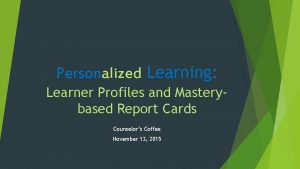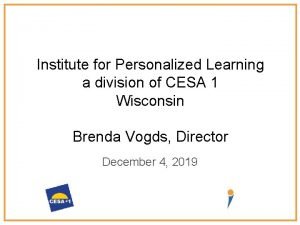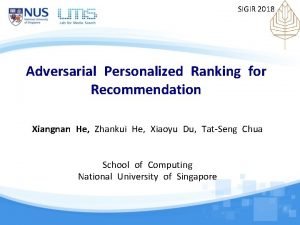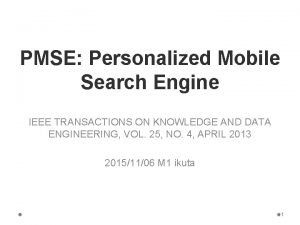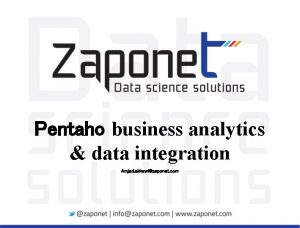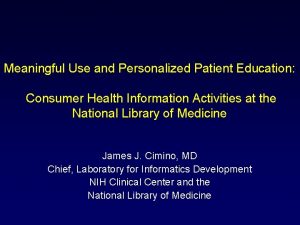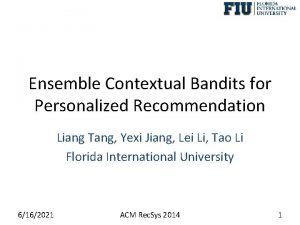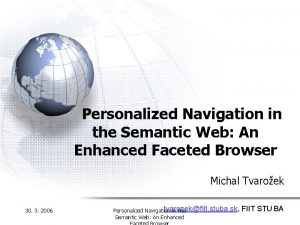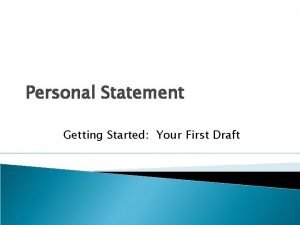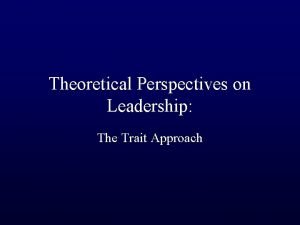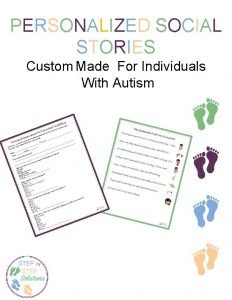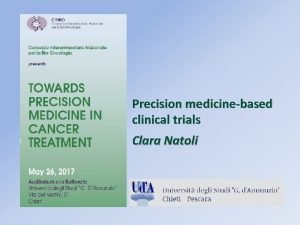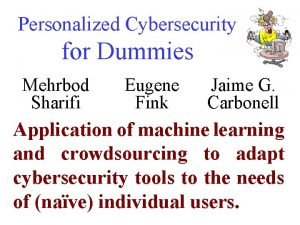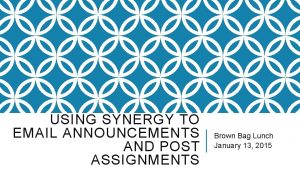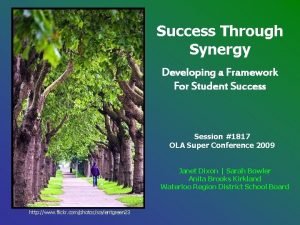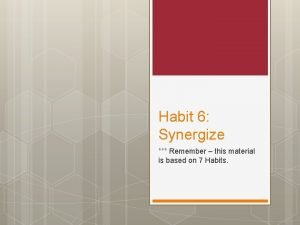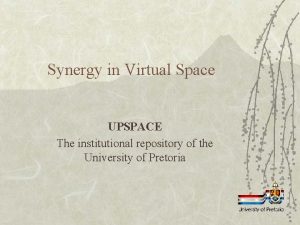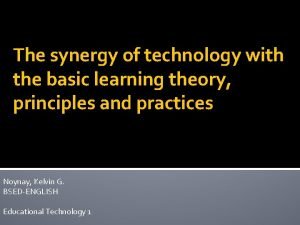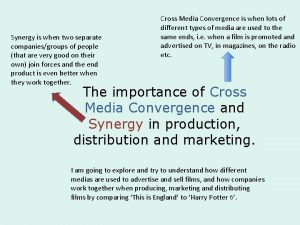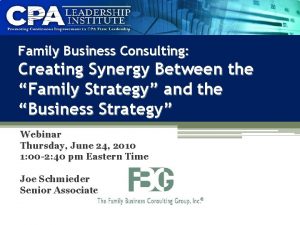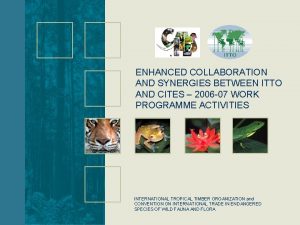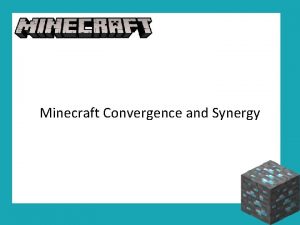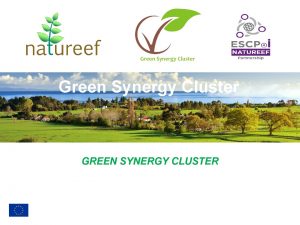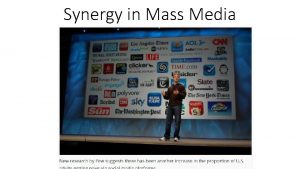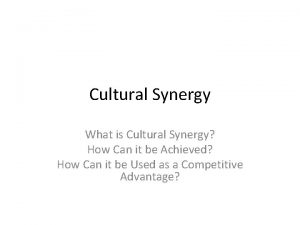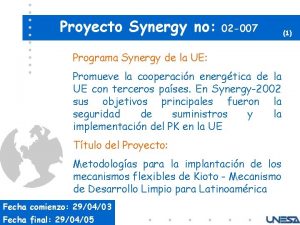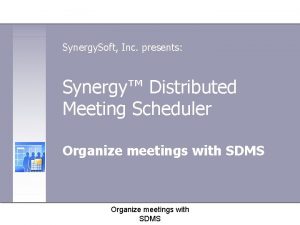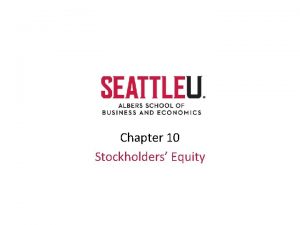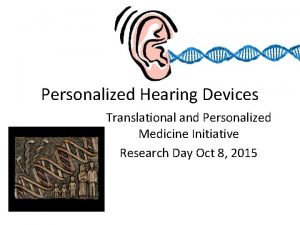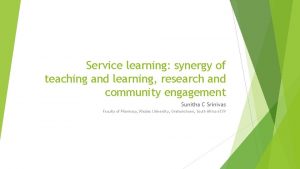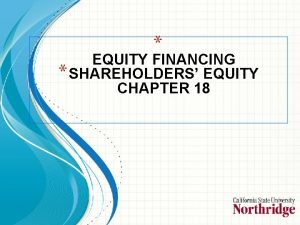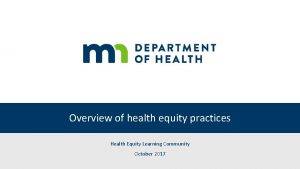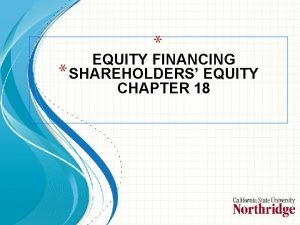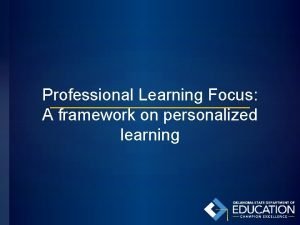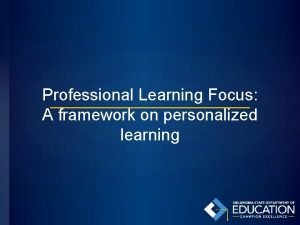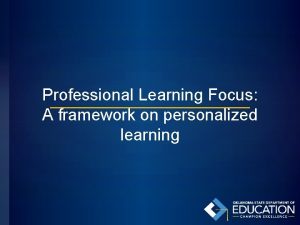The Synergy of Equity and Personalized Learning The




























- Slides: 28

The Synergy of Equity and Personalized Learning: The Why and the How Yvette Jackson #empower 19 Bena Kallick @benakallick Allison Zmuda @allison_zmuda

Resources Landing page: www. learningpersonalized. com /empower 19

Why is the synergy so essential right now? Optimizing learning, achievement, selfactualization & contribution for every learner

We can no longer lose the human capital of our young generation. Why the urgency?

VUCA Volatile Uncertain Complex Ambiguous U. S. Army War College 5


Grounded in Neuroplasticity: “Genius is more than genes. ” “Regardless of the brain with which we are born, every brain is capable of neuroplasticity. This means that with practice and effort we can build the brains we want. ” — Judy Willis

Equity Consciousness All students are wired for high intellectual performances and the desire to be inquisitive, engaged in learning, and self actualization. So why are so many students of color and second language learners underachieving?

Neuroscience and Value of Learning • 90 % – transport nutrients, regulate immune system THE PROPENSITY OF ALL BRAINS • 10% (dendrites FOR& axons) DEVELOPING & STRENGTHS • Info processing connect information & High Intellectual Performances

How do you develop a strength? • Exposure • Interest • Learning/Practice • Innovation

Neuroscience of Value and Learning: The propensity of all brains for developing strengths and high intellectual performances

Identifying and Activating Strengths

Student's Self Reflection: Tasha

How does this resonate with what you’ve just discovered?

Definition of Personalized Learning Personalized learning is a progressively student-driven model where students deeply engage in meaningful, authentic, and rigorous challenges to demonstrate desired outcomes. — Zmuda, Curtis, Ullman (2015) 15

16

Related but Not a Synonym of Personalized Learning INDIVIDUALIZATION STUDENT controls the pace of the topic as well as when to demonstrate mastery. TEACHER/SOFTWARE PLATFORM drives instruction through tasks and related lesson plans. “I’m skeptical of personalized learning that is too much about kids spending a lot of time on computers marching through discrete tasks at their own pace… it pulls kids too often away from doing meaningful work and having meaningful interactions with peers, and it can value the individual needs over the idea that we’re all in this together. ” — Ron Berger, EL Education

Related but Not a Synonym of Personalized Learning DIFFERENTIATION STUDENT selects from a range of content, process, and/or product options to meet the requirements. TEACHER identifies appropriate choices for the range of students in the classroom to meet desired goals. “We need to help students take more ownership o their learning, which means that we need to own the work a little less. ” — Mike Anderson, Author & Consultant

Four Attributes to Build Culture for Thinking 19

20


Antiquated Learning Model Only some learners have access to full taxonomy

Reimagined Learning Model • All students need to have foundational thinking and fluency skills. • All students need to be challenged by non-routine application of skills, content, and potentially innovative experiences.


Verbs for Third Story Intellect Evaluate Predict Generate Speculate OUTPUT Imagine Apply a principle Judge If/Then Verbs for Second Story Intellect Compare Distinguish Contrast Explain PROCESS Classify Infer Sort Sequence Verbs for First Story Intellect Complete Identify Count Name INPUT Define Match Describe List Hypothesize Forecast Idealize Analyze Synthesize Make analogies Reason Recite Select Observe Scan

Conduit for Equity Consciousness: High Operational Practices • Identifying and activating strengths • Building relationships • Nurturing high intellectual performances • Providing enrichment • Incorporating prerequisites • Situating learning in the lives of students • Amplifying student voice

Using High Operational Practices 1. Identifying and Activating • Validating Strengths • Comprehensive 2. Building Relationships • Multidimensional 3. Nurturing High • Empowering Intellectual Performances 4. Providing Enrichment • Transformative 5. Incorporating • Emancipatory Culturally Responsive Teaching Prerequisites 6. Situating Learning In The Lives Of Student 7. Amplifying Student Voice

Through experimentation, feedback, persistent practice, risk taking, failure, and success, every one of us continues to discover our interests, passions, potentials, aversions, values, styles, and tastes.
 Personalized learning learner profile
Personalized learning learner profile Institute for personalized learning
Institute for personalized learning Hexiangnan
Hexiangnan Personalized mobile search engine ieee paper
Personalized mobile search engine ieee paper Pentaho business analytics
Pentaho business analytics Personalized patient education
Personalized patient education Contextual bandits for personalized recommendation
Contextual bandits for personalized recommendation Personalized recommendations
Personalized recommendations Personalized navigation
Personalized navigation Personal statement first draft
Personal statement first draft All to one reduction
All to one reduction Limitations of trait theory of leadership
Limitations of trait theory of leadership Social stories questionnaire
Social stories questionnaire Medicine
Medicine Oyunlarm
Oyunlarm Cuadro comparativo entre e-learning b-learning y m-learning
Cuadro comparativo entre e-learning b-learning y m-learning Synergy lcps
Synergy lcps Joy boyce
Joy boyce Success through synergy
Success through synergy Habit 6 synergize
Habit 6 synergize Objective of synergy
Objective of synergy Synergy business park
Synergy business park Synergy software repository
Synergy software repository Synergy armenia
Synergy armenia Sai synergy llp
Sai synergy llp Synergy of technology
Synergy of technology Cross media synergy
Cross media synergy Examples of synergy in family
Examples of synergy in family Itto synergy
Itto synergy
